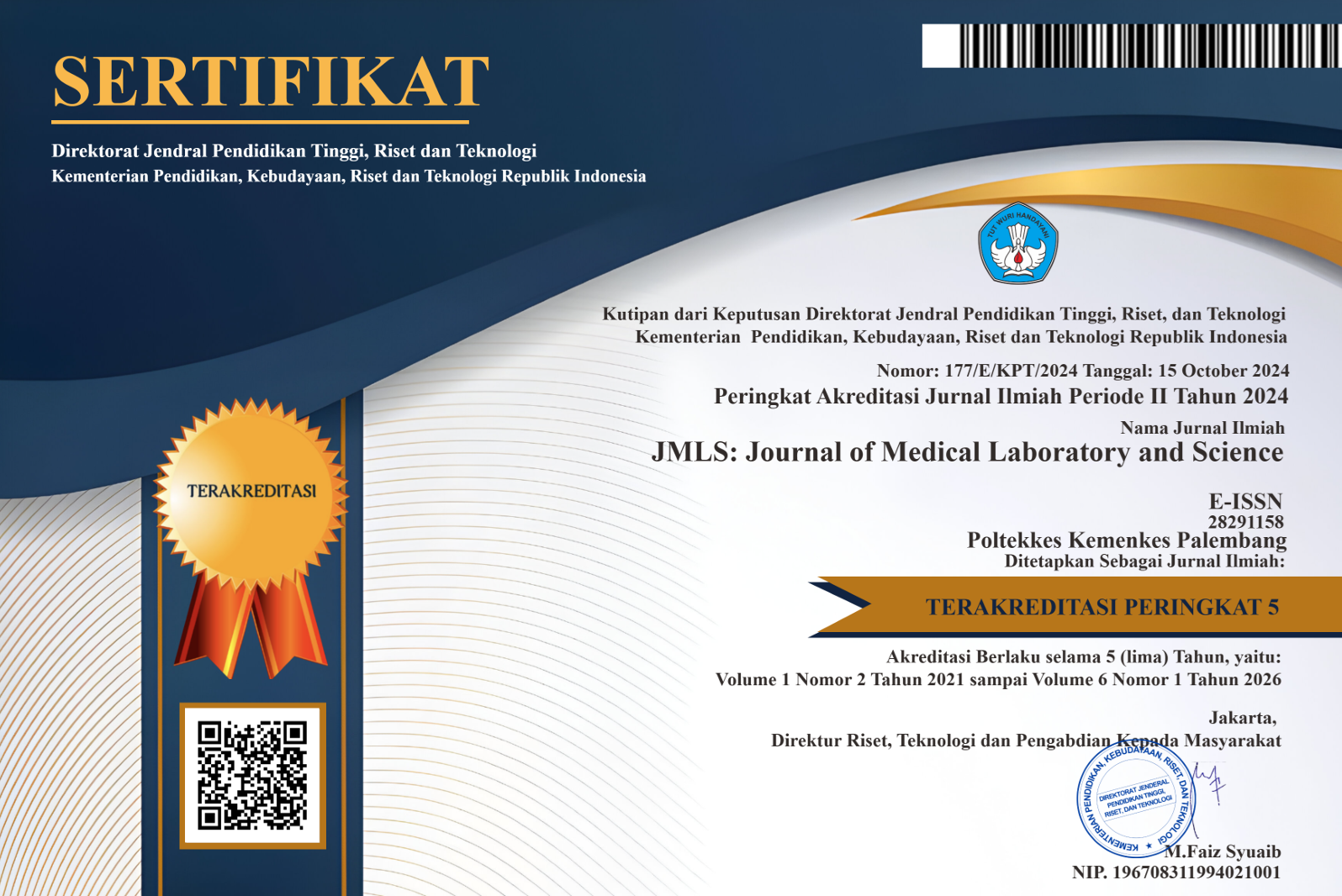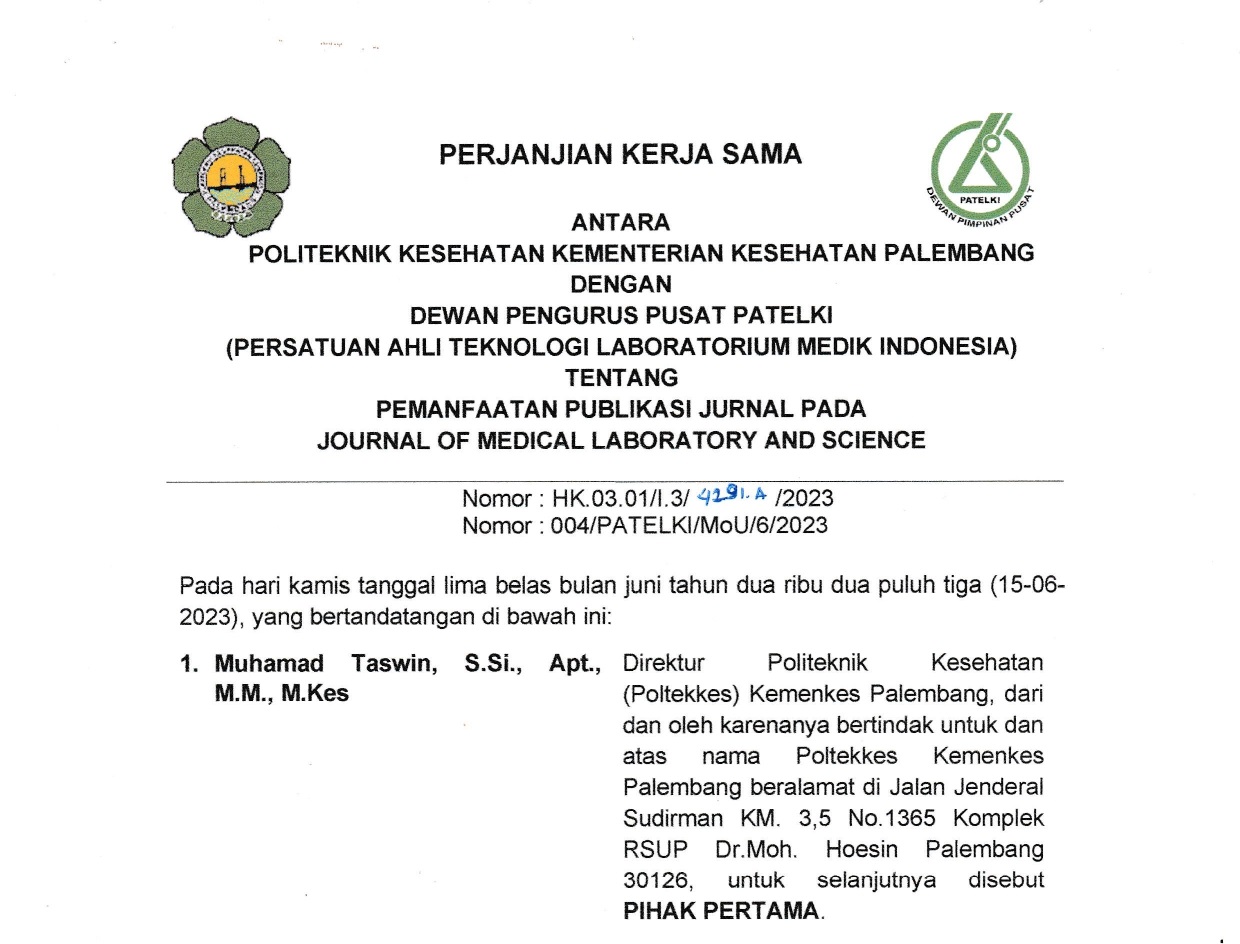BLOOD PRODUCT SAFETY
CHEMILUMINESCENCE ASSAY (CLIA) METHODS FOR TRANSFUSION-RELATED INFECTIOUS DISEASE DETECTION
Abstract
Background: Blood transfusion services are attempted to utilize human blood as a basic element for humanitarian purposes. Both blood and blood products are playing a crucial role in health services. Blood transfusion is a medical procedure that contains risks due to the possible risk of Blood-transfusion related infectious disease. Each blood product is requisite to be screened for blood-transfusion related infectious disease at least in 4 parameter such as Hepatitis B Surface Antigen (HBsAg), HIV 1/ HIV 2 Antibody, Hepatitis C antibody (anti-HCV) and Syphilis. Blood-transfusion related Infectious disease can be detected through antibody or antigen detection by various methods such as Chemiluminescence Immuno Assay (CLIA). Methods: This paper is a literature review, Results: CLIA has been developed in various field including clinical diagnosis of various disease due to its selective, sensitive, speedy and short time analysis time consuming. Conventional immunoassay methods requires longer incubation time, longer turnaround time and shorter detection range. Conclusion:CLIA can be used to reduce examination time while increasing its sensitivity and spesificity.
Copyright (c) 2022 Journal of Medical Laboratory and Science

This work is licensed under a Creative Commons Attribution-ShareAlike 4.0 International License.
Authors who publish with this journal agree to the following terms:
- Authors retain copyright and grant the journal right of first publication with the work simultaneously licensed under a Creative Commons Attribution License that allows others to share the work with an acknowledgement of the work's authorship and initial publication in this journal.
- Authors are able to enter into separate, additional contractual arrangements for the non-exclusive distribution of the journal's published version of the work (e.g., post it to an institutional repository or publish it in a book), with an acknowledgement of its initial publication in this journal.
- Authors are permitted and encouraged to post their work online (e.g., in institutional repositories or on their website) prior to and during the submission process, as it can lead to productive exchanges, as well as earlier and greater citation of published work














